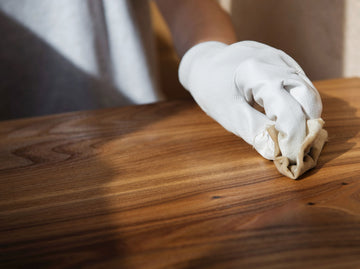Oiling and varnishing are two popular ways to finish wood, but they offer distinct benefits and drawbacks. In this post, we'll explore the key differences between these two methods, helping you decide which one is best suited for your specific needs.
About Oiling wood
Oiling wood involves applying natural oils that penetrate deep into the wooden fibers, nourishing the material from within. We offer boiled linseed oil, linseed oil stain, and hard wax oil, which highlight the wood’s natural grain while providing a rich, warm, and breathable finish.
Benefits of Oiling Wood
* Natural Finish: Enhances the wood's natural beauty without creating a glossy, artificial layer.
* Deep Penetration: The oil seeps into the wood, providing protection from within.
* Moisture Resistance: Helps prevent drying, cracking, and water damage.
* Breathable and Elastic Coating: Oiled wood remains breathable, allowing natural air exchange, and the coating is elastic, adapting to changes in the wood without cracking.
* Easy Maintenance: Minor scratches and wear can be repaired by reapplying oil without the need for sanding.
* Eco-Friendly: Our natural wood oils are non-toxic and environmentally friendly, making them a safe choice.
Drawbacks of Oiling Wood:
* Regular Maintenance: Oiled surfaces may require periodic reapplication to maintain their appearance.
* Limited Surface Protection: While it protects against moisture, oiling offers less protection against surface-level scratches and impacts compared to harder finishes.
What Is Varnishing Wood?
Varnishing involves applying a hard, protective film over the wood surface using a clear coating. Traditional varnishes can be oil-based or water-based, offering different levels of gloss and durability. However, as a natural wood oil company, we do not provide synthetic options.
Benefits of Varnishing Wood:
* High Surface Protection: Varnish forms a hard barrier that guards against scratches, dents, and wear.
* Long-Lasting Finish: A properly applied varnish can protect wood for years without needing frequent maintenance.
* Waterproofing: Varnish offers strong protection against moisture, making it ideal for outdoor or high-humidity environments.
Drawbacks of Varnishing Wood:
* Plastic-Like Feel: Varnish can give wood a plastic-like appearance, which may detract from its natural look.
* Lack of Elasticity: Varnish is not elastic and can crack or peel over time, especially when exposed to fluctuating temperatures or humidity.
* Labor-Intensive Application: Applying varnish requires precision, and mistakes (like air bubbles or drips) can be difficult to correct.
* Surface-Only Protection: Varnish primarily protects the outer layer of wood without nourishing the material from within.
* Maintenance Challenges: Over time, worn varnish may require complete sanding and refinishing rather than simple touch-ups.
Can You Combine Both Methods?
Our recommended approach is to first oil the wood to deeply nourish and protect it from within, and then apply a hard wax top coat Finish as the final treatment. This product is a hybrid between oil and lacquer, providing a protective surface layer while maintaining the natural warmth and breathability of oiled wood. The hard wax finish enhances durability, offers increased resistance to moisture and scratches, and preserves the organic matte aesthetic.
Conclusion: Which One Is Right for You?
The choice between oiling and varnishing largely depends on the wood's intended use, the desired aesthetic, and the level of maintenance you’re willing to perform. Oiling is ideal for those who prioritize a natural, warm appearance and easy maintenance. Varnishing is the better option if you need a hard, durable surface that can withstand heavy use. Alternatively, our hard wax top coat finish offers a balanced solution for those seeking both nourishment and surface protection.
Ultimately, neither option is inherently better—both serve distinct purposes. By understanding their differences, you can make an informed decision that best suits your woodworking project.


